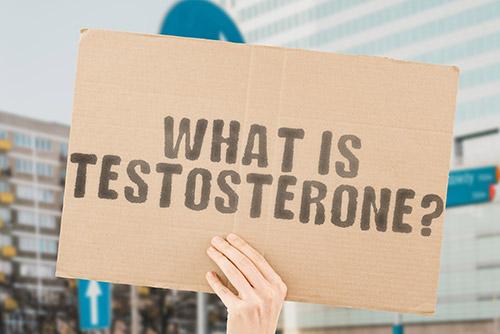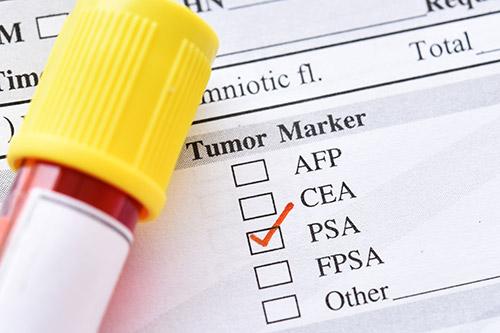What you need to know about low testosterone.
Published
What you need to know about low testosterone
- A testosterone level under 12nmol/L in men or 0.3nmol/L in women is low.
- Symptoms of low testosterone include poor sex-drive, difficulty putting on muscle, tiredness and poor metabolic health.
- The commonest causes of low testosterone in men are age, poor sleep and stress. In women, low testosterone is mostly a problem after the menopause.
- Check your testosterone if you have low testosterone symptoms or are a male over 40.
Low testosterone means that the level of the hormone testosterone in your body is too low to support optimum health. Low testosterone is also known as “hypogonadism”. In terms of concentration in the blood, testosterone is actually the major sex hormone in both men and women. It’s not surprising then that low testosterone impacts many aspects of health including mood, fertility, strength, metabolic health and libido regardless of your sex.
We’ll cover the symptoms of low testosterone, what causes it, how you can test for it and what you can do about it. But first, what testosterone level is considered low?
What is a low testosterone level?
1-in-4 men over 40 have low testosterone.
Testosterone levels peak in your late teens and early twenties and after that it’s downhill for both men and women. The drop-off tends to be larger in men than women and about 1-in-4 men over 40 have low testosterone1. However, women can also experience the effects of low testosterone, particularly after the menopause.
Because testosterone levels are higher in men than women, we have different cut-offs for low testosterone depending on biological sex:
| Low | Borderline | Normal | Optimal | High | |
| Male | <8 | 8 - 12 | 12 - 31 | 14 - 31 | > 31 |
| Female | <0.3 | 0.3 - 1.8 | > 1.8 |
In males, we’d really like to see the testosterone level over 14nmol/L. A level between 8 and 12nmol/L is borderline and you may or may not notice symptoms. A testosterone below 8nmol/L is likely to give you symptoms.
In females, we’re looking for total testosterone to be between 0.3 and 1.8nmol/L.
What are low testosterone symptoms in men?
Symptoms of low testosterone in men depend on how low the testosterone level is. If the testosterone is only borderline low, you may have no symptoms at all. That’s not to say that low testosterone isn’t having a negative effect, just that it’s probably subtle and you might not notice it. More severe testosterone deficiency will cause more obvious symptoms.
The main symptoms of low testosterone in men are:
- Poor metabolic health - high cholesterol and blood sugar
- Difficulty putting on muscle
- Higher fat mass
- Poor libido
- Infertility
- Erectile dysfunction
- Low energy
What are the symptoms of low testosterone in women?
Low testosterone is rarely a problem in women before the menopause but is not uncommon after the menopause.
Symptoms of low testosterone in women can include:
- Low energy
- Poor sex-drive
- Low muscle mass and high fat mass
- High cholesterol and high blood sugar
- Low bone density
- Depression
What causes low testosterone in men?
Figure 1 shows how testosterone is produced in males. A hormone called luteinising hormone (LH) is produced by the pituitary gland in the brain and it stimulates the testes to produce testosterone. This accounts for nearly all the testosterone produced in men.

Importantly, testosterone exerts negative feedback on both the testes, to inhibit further testosterone production, and the pituitary, to inhibit LH production. This keeps testosterone levels in balance.
We can divide the causes of low testosterone in men into those that relate directly to reduced production of testosterone from the testes despite adequate LH stimulation (called primary hypogonadism) and those causes that relate to low LH production from the pituitary (called secondary hypogonadism).
Poor sleep and stress are common causes of low testosterone in men.
Impaired testosterone production by the testes:
- Injury to the testes caused by trauma
- Injury to the testes caused by infection
- Certain genetic conditions (e.g. Klinefelter syndrome)
Impaired production of LH by the pituitary gland:
- Poor sleep
- Stress
- Malnutrition
- Type 2 diabetes
- Obesity
- Taking steroids
- Age
- Alcohol
- Overtraining
- Pituitary tumours
By far the commonest causes of low testosterone in men relate to reduced production of LH from the pituitary gland. This is often due to poor sleep, stress or age.
What causes low testosterone in women?
In women, the ovaries produce some testosterone in response to stimulation by LH produced in the pituitary. However, this only accounts for about 25% of testosterone production in women. Another 25% comes from the production of testosterone in the adrenal glands. The remaining 50% comes from conversion of other steroid hormone precursors into testosterone in tissues such as the skin, liver and fat.
The main causes of low testosterone in women are:
- Increasing age
- Menopause
- Medications such as contraceptives or steroids
- Removal of the ovaries
- Lack of hormone production from the adrenal glands (Addison’s disease)
When should you check your testosterone level?
When to check for low testosterone
You should check your testosterone level:
- if you have symptoms of low testosterone
- every year if you're a man over 40
- if you're a woman after the menopause, particularly if you have poor sex-drive
There are two main reasons to check your testosterone level. Firstly, if you’re a man or woman with some of the symptoms above then it would be sensible to check to see if low testosterone could be a cause.
Secondly, if you’re a man over 40 you should check for low testosterone every year as part of your general health assessment. This is because low testosterone is very common (affecting 1 in 4 men over 40) and, particularly if it’s only borderline low, you might not notice any symptoms.
Low testosterone can often be a sign that you’re not metabolically healthy. Poor sleep, stress, being overweight, diabetes or lack of exercise can all cause low testosterone. So even if the low testosterone itself isn’t a major problem, it’s often a sign of something else that can be affecting your health.
Post-menopausal women may also want to check their testosterone every now and then. Tiredness and low sex drive might feel “normal” in the menopause but there could be a reversible cause if your testosterone is low.
How to test testosterone levels
Fortunately it’s dead simple to check your testosterone level. You can simply order our testosterone blood test and either take a finger prick blood sample at home or arrange a traditional venous blood draw. You’ll get your testosterone level and a report explaining what the result means and any further actions to take.
Check if you have low testosterone. Order an at home test now.
What you can do about low testosterone
If you find that you do have low testosterone, the first step is to try and understand the cause. This usually involves more in-depth testing to measure free testosterone luteinising hormone (LH) and follicle stimulating hormone (FSH) levels. This allows us to understand if this is “primary hypogonadism”, due to a problem at the level of the testes in men or ovaries in women, or “secondary hypogonadism” due to a problem at the level of the pituitary.
In men, low testosterone is usually secondary hypogonadism due to poor sleep or stress and addressing these factors along with a good diet and exercise regimen is often enough to boost testosterone levels. If this approach doesn’t work and low testosterone levels are causing symptoms then it’s worth considering testosterone replacement therapy or TRT.
TRT is usually given as a gel, injection or skin patch and the aim is to get testosterone levels into the normal range and address any associated symptoms.
Women with low testosterone, particularly after the menopause, can also benefit from TRT. It’s specifically licensed for prescription for women with low sex-drive after the menopause.
Get tips on better health
Sign up to our emails on the better way to better health.
We'll keep you up-to-date with the latest research, expert articles and new ways to get more years of better health.







